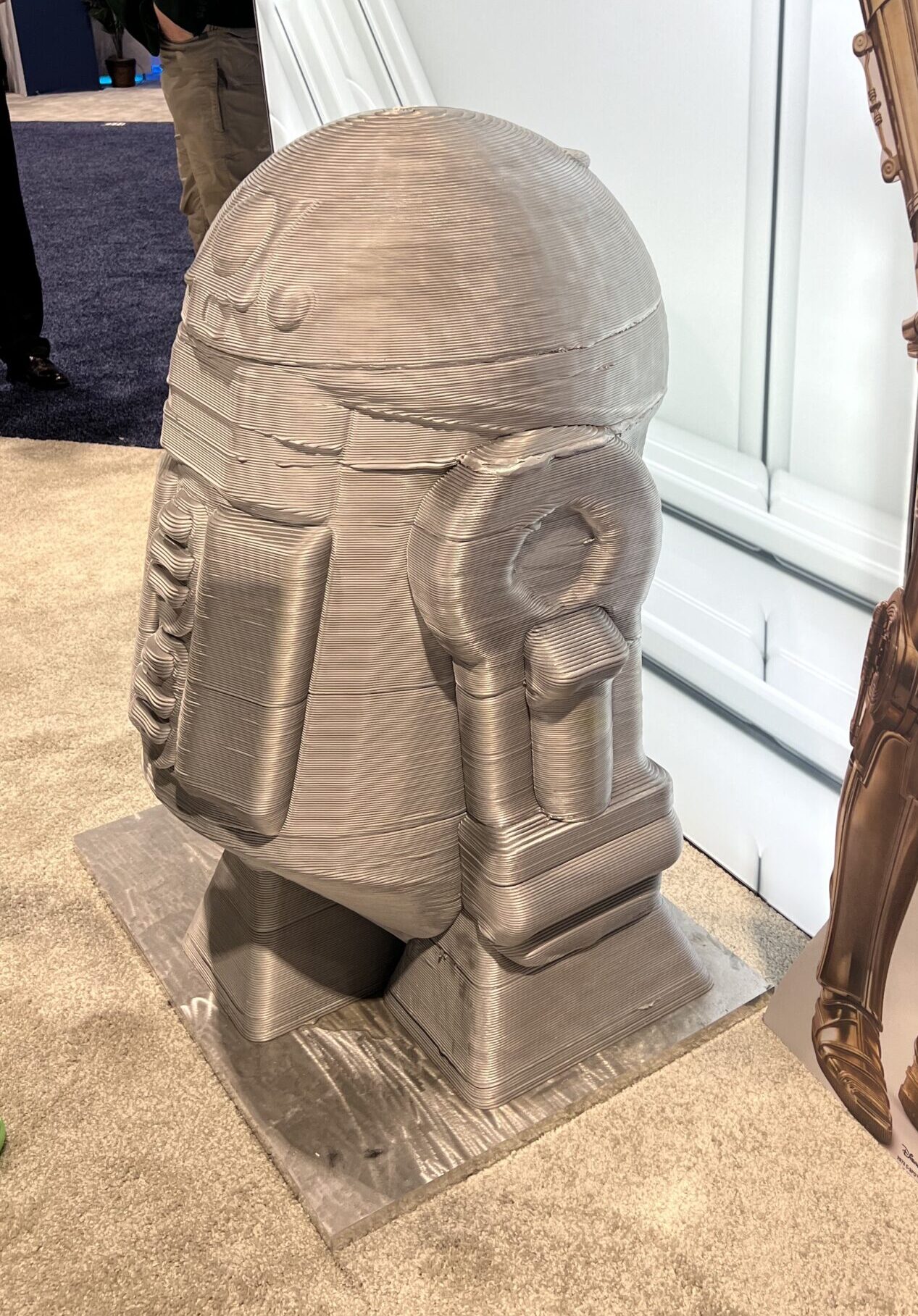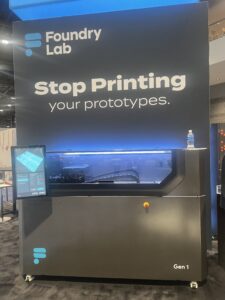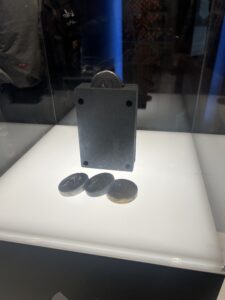As North America’s leading trade show dedicated to 3D printing, RAPID + TCT represents a unique glimpse into the development of the additive manufacturing (AM) industry on the continent. This year’s event showcased the latest stage of evolution for the sector: integration into the industrial production ecosystem. The technology is no longer interning as a prototyping tool, nor is it an entry-level jig and fixture apprentice. AM is entering the manufacturing workforce to produce end components.
From Medical to Military 3D Printing
This was in part evidenced by the presentations given at the event. Talks like “Regulatory Considerations for Hospital-based 3D Printing” weren’t about simply qualifying 3D printed items and proving out the technology. Instead, they were more nuanced. For instance, Dr. Jonathan Morris, a neurologist at the Mayo Clinic, noted that the industry is at the level that it is actively collaborating with the US Food and Drug Administration to ensure that AM is being integrated into healthcare, increasingly at the point of care.
“I could say, for our institution, which I think is a large point-of-care manufacturing facility, we’ve been walking kind of step-by-step, hand-in-hand with the FDA community, building towards this, so there’s no shocker that’s coming and to say, ‘Hey, shut it all down,’” Morris said. “The FDA has been fantastic to work with because they also see the needs of the patient and their risk to the patient and are trying to find a balance,” he said. “I think that it’s the next evolution and hopefully clinicians have been at the table helping perhaps some of that, so that we can come to a common place of agreement.”
Whereas past events would have been about convincing attendees that AM is ready to make end parts, the “A Disruption of the Industrial Base” was about 3D printing entire jointless tank hulls. Major General Darren Werner wasn’t in the audience asking how to prove that 3D printing could be used for critical components. He was actually leading the discussion for a project that he had initiated when he sought out MELD CEO Nancy Hardwick to see if her Friction Stir Additive Manufacturing could be used to produce tank hulls.

“Additive manufacturing will enable the print-on-demand creation of tools and fixtures to allow quick and efficient upgrading or the creation of entire new production facilities. As part of this new platform, we can begin tackling much larger forged or cast parts in order to alleviate some of the supply chain issues that often plague them,” Werner said. “Their production size will no longer be an obstacle, and the creation of more complex geometries than ever achievable in traditional casting or forging will allow us to enhance and optimize parts as we move forward.”
MELD and Foundry Lab
It may have been the current stage of the technology that saw two major AM players skip out on this year’s event. Carbon and Desktop Metal refrained from attending RAPID + TCT. While it’s possible they’d prefer to display at shows dedicated to industrial manufacturing, rather than one whose roots are in rapid prototyping, it’s more likely that the two companies are cutting expenses amid financially uncertain times, given the cost-saving measures Carbon and Desktop Metal took last year.

An R2D2 model 3D printed using MELD technology.
This allowed smaller, fast-growing companies like MELD and Foundry Lab to stand out. These two had the most exciting technologies of the year. MELD’s stir friction welding uses kinetic energy to force low-cost stock metal to behave almost like a paste, at which point the material builds up massive parts at an incredible rate. There really is no technology like it for large metal parts, with slower competing directed energy deposition processes more costly and caustic.
3DPOD Episode 147: Solid State Metal 3D Printing with Tim Bell, COO of MELD
“I imagine that some of you may be asking, ‘Why pursue a machine that can produce a jointless hull? What are the immediate benefits of this technology?'” Maj. Gen. Werner told the crowd at the Main Stage. “After looking into that issue, our team concluded that there are immediate performance advantages that will ultimately require combat vehicles to move to a one piece home, especially in terms of survivability and weight savings. Unfortunately, traditional manufacturing makes it cost prohibitive.”
3DPOD Episode 140: Digital Metal Casting with David Moodie, Foundry Lab CEO
Foundry Lab is dedicated to smaller metal components with a very innovative take on indirect part production. The technique begins with a binder jet system developed in-house to produce sand molds, in which a metal ingot can be easily placed for casting in a specialty microwave furnace. Whereas Markforged and Desktop Metal once promised microwave sintering technology, Foundry Lab has actually delivered it. However, rather than rely on metal injection molding powders, this technique involves standard metal ingots with actual cast parts. In turn, material properties are consistent with what a manufacturer expects from a foundry supplier. With locations in New Zealand and California, the startup is able to re-shore casting immediately.
- The Foundry Lab 3D printer
- A 3D printed mold with metal ingots (aluminum and zinc are offered as of now with more metals being qualified)
- Finished part. (Not pictured, the ever important microwave furnace)
Re-shoring
Re-shoring and supply chain resilience were common themes at the event, demonstrating the integration of AM into production for a new era of advanced local(er) manufacturing. For that reason, news of expansion for many businesses involved not just opening a sales office in a foreign country, but a manufacturing facility. This was the case for DMG Mori and Visitech, both of which will be building equipment in the U.S. For DMG Mori, this means producing the new SLM 30 with Advanced Beam Control at its site in Davis, California. For Visitech, Adam Kunzman will be heading up a factory outside of Dallas, Texas near key supplier Texas Instruments. We’ll discuss that latter story in more detail in a separate article.
Meanwhile, a slew of Chinese manufacturers were at RAPID + TCT, both sensing the needs of Western companies to produce locally using digital technologies and growing beyond the limits of the domestic market. This included Farsoon and EPlus, arguably the first and second makers of metal laser powder bed fusion (LPBF) machines to sell outside of China, as well as Bright Laser Technologies, HBD, and Avimetal, who only began expanding outside of the country more recently. All of them are pitching different strategies and strengths that will be covered in a separate article.
As China is no longer content with manufacturing Western tchotchkes, the country’s advanced technologies are growing at a blinding rate, so companies like EOS, SLM Solutions/Nikon, GE, and even Velo3D should be shaking in their boots. The only thing that may be holding them back are the ITAR and other regulations related to aerospace, defense, and medical production that may not be as easy for Chinese firms to meet for geopolitical reasons.
As all of these companies compete, they are not only enabling re-shoring, but also supply chain redundancy. Just as DMG Mori will have production locations in Europe, Asia, and North America, It’s not out of the realm of possibility that, given enough customers, Farsoon could begin building PBF machines in the U.S. In this way, not only will AM users be able to leverage the technology as insurance against supply chain disruptions, but they’ll also have redundancy for their own AM equipment.
NIST Manufacturing Extension Partnership
All that’s necessary for that sort of outcome is for the technology to experience widespread adoption. All signs indicate that that will be the case because AM is not experiencing an ordinary roadmap of organic growth. It is being boosted by national governments. This was indicated not just by presentations from Major General Darren Werner and Omar Mireles from NASA, where 3D printing is being implemented across various programs, but by Michael Aller, Director of Supplier Development at the Florida affiliate of NIST, Florida Makes. In his presentation, “Supporting Supply Chain Resilience in Advanced Manufacturing: NIST Manufacturing Extension Partnership Supplier Services,” Aller discussed the myriad ways where the federal government is explicitly boosting AM.
Through its network of 51 Manufacturing Extension Partnership (MEP) centers in all 50 states and Puerto Rico, NIST is able to aid manufacturers using a variety of methods. These include sourcing and supply chain risk management solutions—such as resources, training, networking, assessments, certifications, and bespoke engagements—as well as supplier scouting as enabled by legislative and executive actions, like Buy America, Bipartisan Infrastructure Law, and the CHIPS and Science Act, Inflation Reduction Act. NIST also hosts the Connex Marketplace, which is a bit like a federal Xometry that connects suppliers and buyers (and then some).
The evolution of supplier scouting has taken place steadily since the American Recovery and Reinvestment Act in 2009, with more recent developments like the “America’s Supply Chains” executive order 14017 driving it further faster. The capabilities of the MEP network were effectively demonstrated in the aftermath of Hurricane Ian that hit Florida in September 2022. When Florida authorities needed to set up and equip field hospitals for emergency medical care, they tapped Florida Makes to supply defibrillators and related accessories. The organization then reached out across the ME National Network and Connex Marketplace and found Zoll Medical Corporation, a defibrillator manufacturer in Massachusetts, who was able to deliver the items within 48 hours, less than three days from when the storm hit.
In addition to the above, Aller discussed how the most recent legislative changes have given NIST a huge boost. For instance, the CHIPS and Science Act will see over $20 million invested in the MEP network over the next two years. This means that AM suppliers will be able to include themselves in the Connex Marketplace, allowing them to connect with customers on the platform. To do so, they can connect with their local MEP Center.
It’s interesting to note that that Aller used a hurricane-related emergency as an example to highlight the efficacy of the network because, while the next supply chain crisis may be related to war or pandemic, there’s no doubt that extreme weather events caused by global warming will also impact the delivery of goods going forward. As funding is pumped into supply chain resilience and decarbonization, AM and other digital manufacturing tools stand to be primary benefactors of this funding. In turn, this
Subscribe to Our Email Newsletter
Stay up-to-date on all the latest news from the 3D printing industry and receive information and offers from third party vendors.
You May Also Like
3D Printing News Briefs, April 27, 2024: Research, Digital Dentistry, Cycling, & More
We’re starting today’s 3D Printing News Briefs with some research into 3D printed luminescent quantum-dot polymer architectures and free-form laser beam shaping, and then on to an open source 4-axis...
HP & INDO-MIM Collaborate to Boost Metal 3D Printing in India
HP Inc. and INDO-MIM, a US- and India-based supplier of metal injection molding (MIM) powders and contract manufacturer, have announced that the two companies will collaborate to accelerate additive manufacturing...
3D Printing News Briefs, February 17, 2024: Shot Blasting, Service Bureaus, & More
In today’s 3D Printing News Briefs, we’re starting out with post-processing, as SKZ Würzburg is using a shot blast system from AM Solutions for its research. Moving on to business,...
3D Printing News Unpeeled: Not That Kind of Organ 3D Printing
GKN Aerospace will create a 150 jobs in Trollhattan Sweden with an investment of $60 million part of which comes from the Swedish Energy Agency’s Industriklivet initiative. The investment will...

































